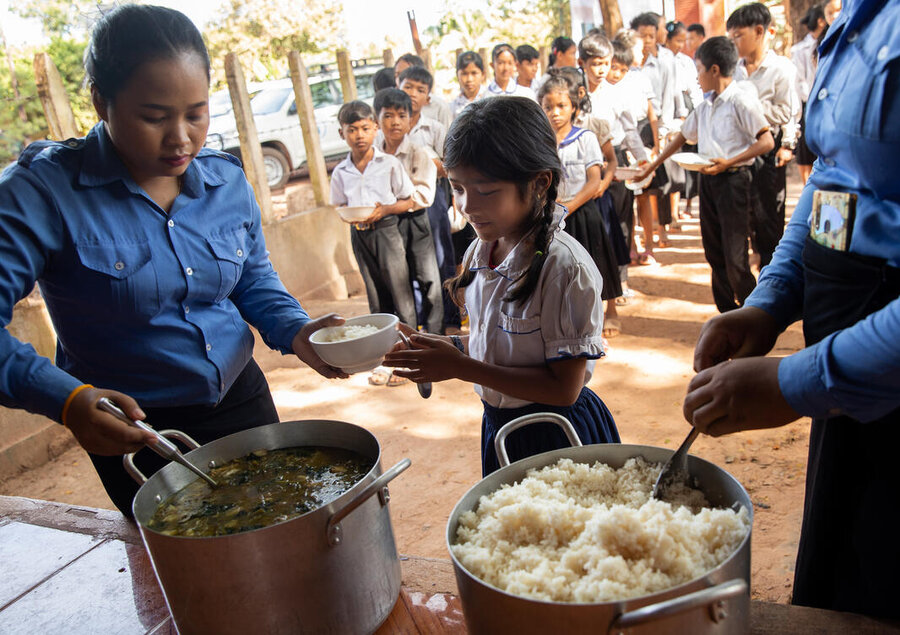
Dawn's yet to break on the rice fields around Bos Thom village, in Cambodia's northern Siem Reap province. The silence is broken by faint music from a nearby house - the tail end of a wedding party - and the darkness by a single light.
Mec Sinat is already at work beneath her house which sits on stilts. Helped by one of her daughters, she weighs, sorts and bags fresh, locally grown vegetables: long beans, gourds, lettuces and pumpkins. These she will load onto her moped and deliver to schools in the area.
Across the road Leach Panh, a cook, is lighting the fire in the small outhouse that serves as the kitchen of the local primary school, which is signed up to World Food Programme (WFP) school meals. Soon, she and her daughter will start preparing breakfast for 150 children.
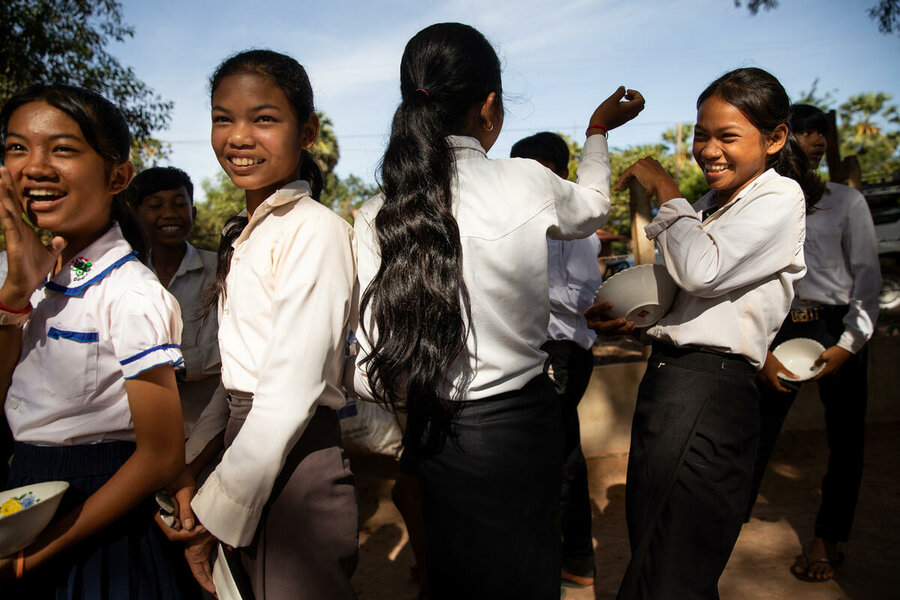
On the menu is samlor korko, a soup that combines in-season vegetables, fish, spices and herbs. This will be served with a side of fortified rice donated, along with cooking oil, by the US Department of Agriculture.
Investing in the future
With almost one-third of children under-5 suffering from stunting - or low height-for-age - and undernutrition costing the Southeast Asian nation about 1.7 percent of its annual GDP, school meals can be a game-changer in Cambodia.
Pupils at Bos Thom primary school are among 300,000 children who enjoy daily hot meals through a school feeding programme launched by WFP and Cambodia's Government in 1999.
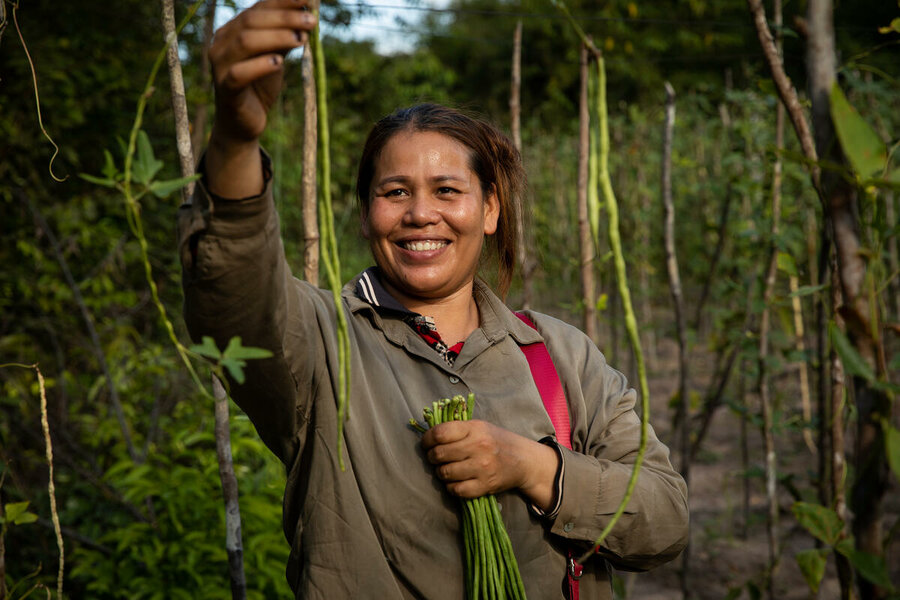
Today, the Government is gradually taking it over, recognizing its positive impact on nutrition, education, social protection and local economy. Cambodian authorities independently manage and fund meals in approximately 40 percent of programme-participating schools, allocating nearly US$5 million to school feeding this year (up from US$52.9 million in 2022).
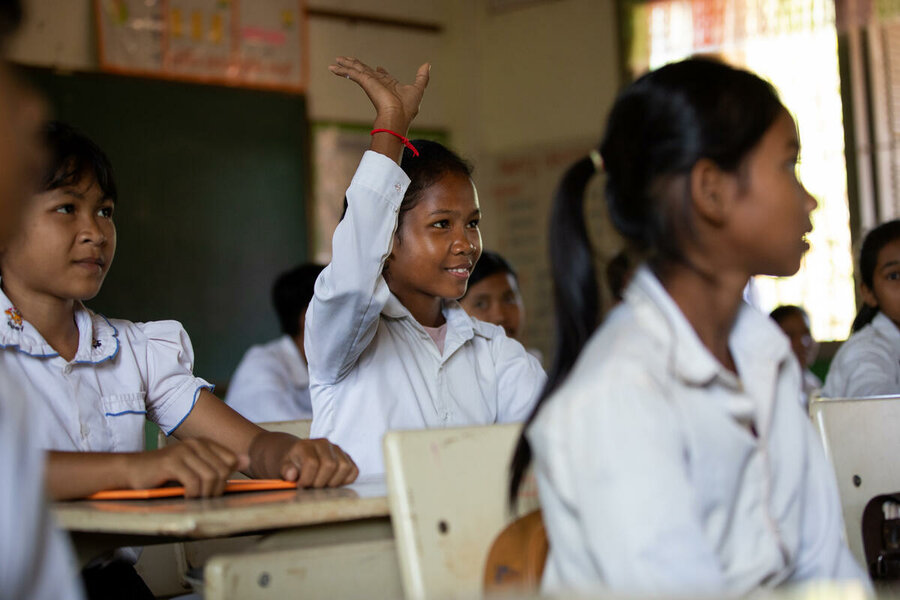
Today, WFP works with national and local authorities to create the conditions for the Government to fully own the programme, by ensuring it's included in national budgets, planning and the country's national protection scheme.
Standing by the gate to welcome the children as they arrive - most on foot, some on bicycles, a few dropped off by parents on mopeds - head teacher Van Samun praises the impact of the programme, which was introduced at her school in 2003.
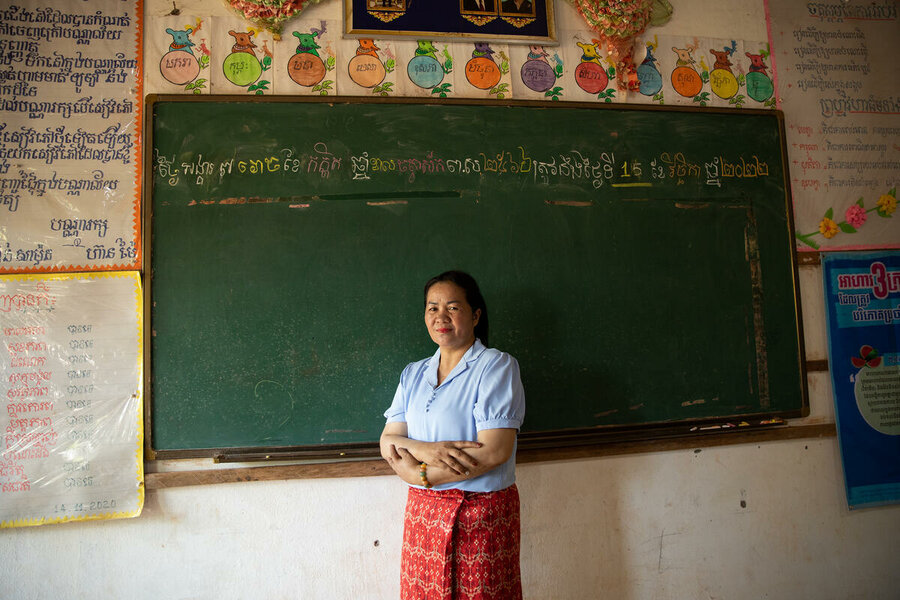
"Dishes like korko soup contain all the basic nutrients beneficial to the children's health and can reduce the likelihood of contracting diseases," she says.
That's not the only difference she has noticed in a village where many people are illiterate - and where students were once frequently absent.
"School meals have changed things," she says. "More children are being enrolled in school, and fewer are dropping out. Many are continuing into higher education."
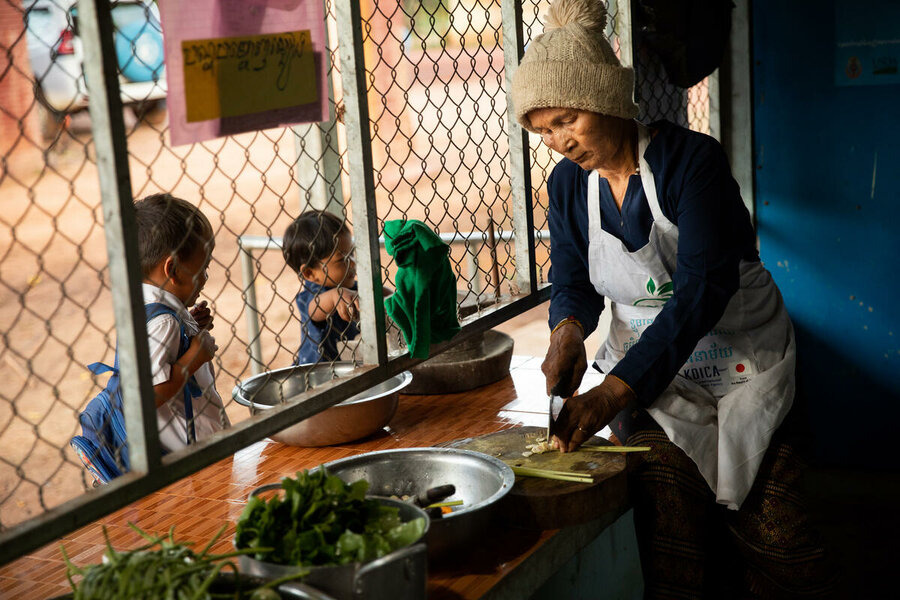
The importance of school meals is not lost on local authorities either. Khnar Pou commune, the administrative unit that includes Bos Thom village, has budgeted in allowances for school cooks like Leach Panh, who often start off volunteering.
"We want to support and encourage the cooks who prepare good, healthy and safe food for our children," says commune chief Khoeun Khen.
The son of farmers who went on to graduate in law, he recalls how meals he received at school allowed "children to focus and absorb more knowledge from teachers".
Women-powered food system
WFP's school feeding programmes are increasingly taking a 'home-grown' approach - in this case a precondition of the handover to Government. By requiring that 70 percent of the food used be grown locally, the initiative helps create jobs, reducing poverty and, in turn, migration.
School meals are also providing a secure market for local farmers, increasing their incomes and creating a virtuous cycle, with more and more villagers - especially women - starting to grow their own vegetables, says local official, Ley Long.
"This helps women become more active and proactive, instead of depending on men," she adds. "They learn to value themselves."
School meals are also helping to reduce season migration in rural areas, with some workers even leaving the country in search of jobs.
"When they migrate, they leave their children in the care of relatives or neighbours," says Sor Puthy, who works for the provincial education office. "However, growing vegetables at home allows mothers to stay behind with the children and still have an extra income."
Not far from Bos Thom primary school, Thom Ker tends to row after row of lush lettuce in her spacious greenhouse. One of the school's produce suppliers, she speaks proudly of her harvests, which she delivers to the school every week.
"My vegetables are free from chemicals, they keep the children healthy and help them grow strong," she says - and being able to sell them to schools offers her a degree of security.
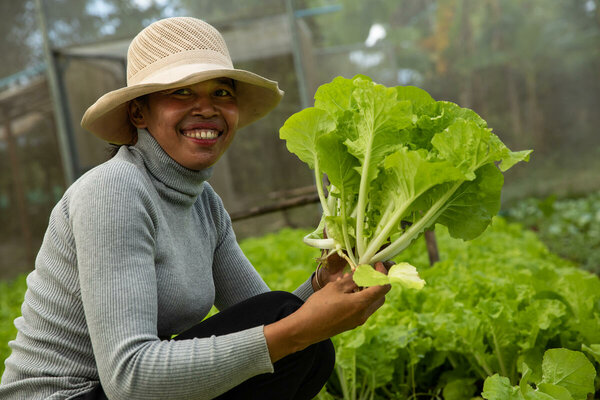
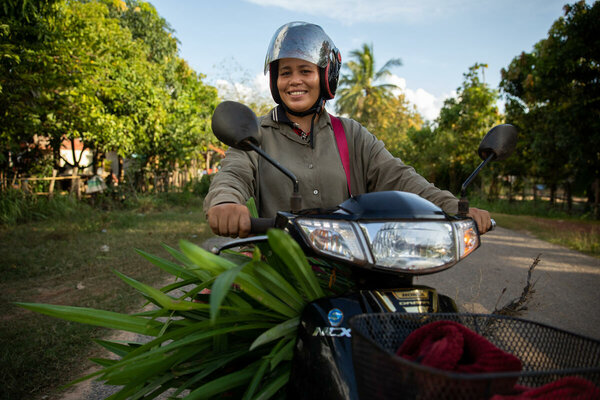
Before sunset, Mec Sinat drives from farm to farm on her moped to buy what's needed for the next day's meals. At dawn, she and her daughters will again prepare packages to deliver to schools in time for cooking.
"I wanted to generate my own income, not relying exclusively on my husband and the family farm," she says. Once a farmer herself, she now acts as an intermediary between area schools and growers. Two years in the job, she is able to contribute to the family business. She buys fuel for their tractor and pays for English lessons for her eldest daughter.






